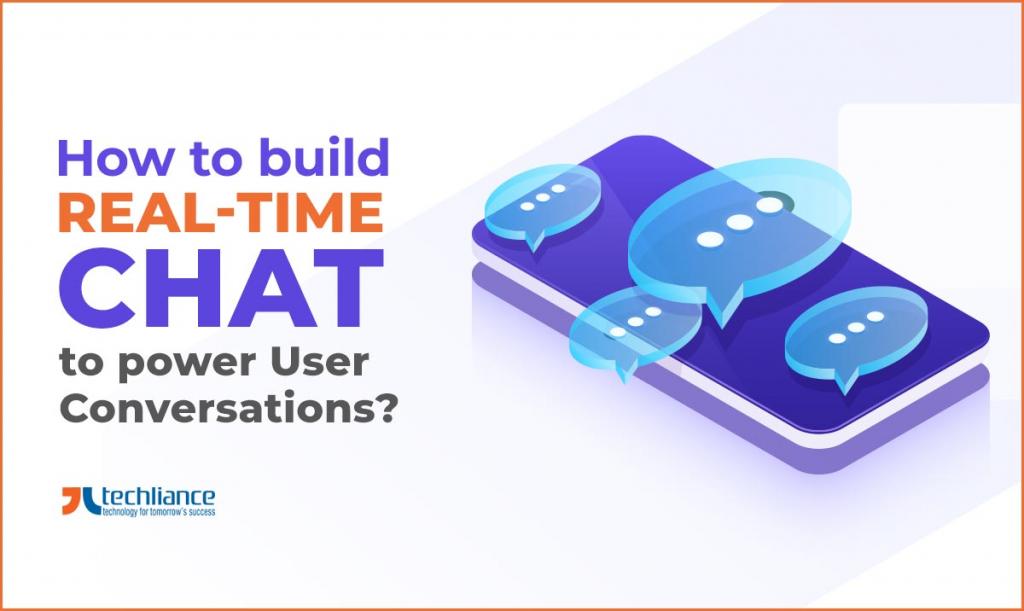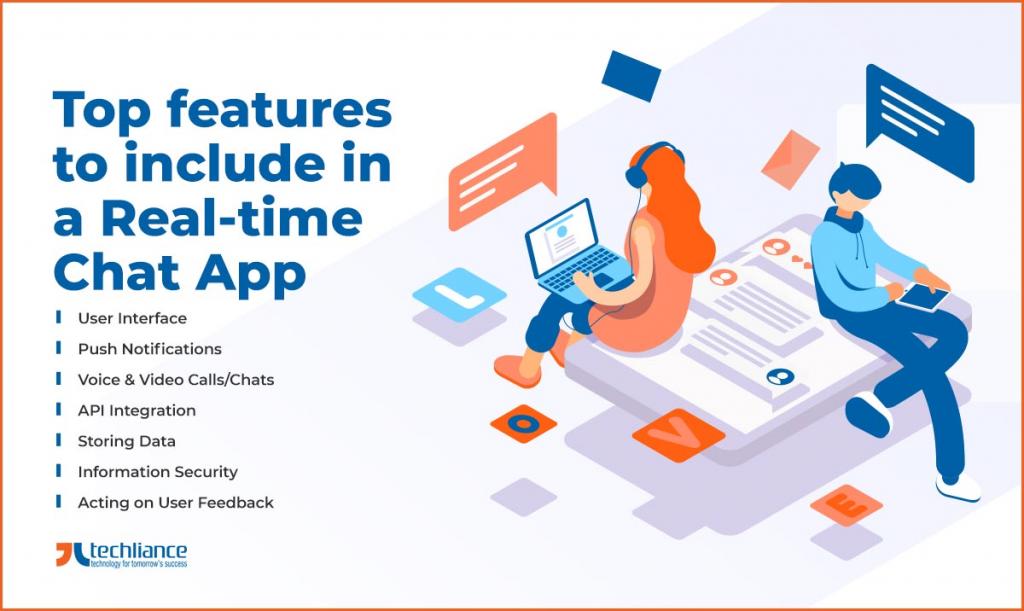Today, real-time chat is hugely popular worldwide and in the United States. This is free to the end-users, quick, and convenient in 2024. It is not much complex for businesses that they need to replicate a version of WhatsApp for their customers.
As long as, you’ve got the right investment, then you are on track. Expert dedicated developers well-versed in suitable technology can create a strong customer-facing chat app. This will power user conversations, leading to increased engagement, loyalty, and even sales.
In this article, we’re going to walk you through the process. So that you get to know exactly what steps to take next. This way you won’t spend all of your budgets.

Important Real-time Chat Statistics to know
- WhatsApp is the most used chat app globally with over 2 billion users. (February 2020)
- Facebook is the second most popular chat app worldwide serving 1.3 billion users. (September 2017)
- Research shows that 82% of customers now expect instant responses from customer service.
Why does a business need Real-time Chat during 2024?
Chat apps deliver instant, real-time messages and information to customers and clients wherever they are. They’re important for several reasons. Firstly, your customers now want all the information they can get at their fingertips—and this includes messages.
Remember that chat applications don’t have to wait and they don’t want to wait. Indeed, because real-time chat mimics offline world behavior. Customers can communicate 1:1 with the business they want to make a purchase or hire services from.
And the only way you can give them an instant response online is through real-time messaging. This is one method that solves their problems there and then—via a chat app. It in turn encourages them to decide on their purchase.
Comparison: Chatbots vs Live Chat
Top features to include in a Real-time Chat App
These are the best features for inclusion in a real-time chat through 2024.
- User Interface
- Push Notifications
- Voice & Video Calls/Chats
- API Integration
- Storing Data
- Information Security
- Acting on User Feedback
Now, we discuss these must-have features of a real-time chat app in detail.
User Interface
The most successful real-time chat apps have a plain and simple user interface. This is true for most in-demand chat apps across the world. For example, WhatsApp, Facebook Messenger, Snapchat, and Telegram, etc.
The simpler the UI is, the easier it is for customers to get answers to their questions swiftly. Before you do anything else, just design a cleaner and simple UI. Make sure that you properly implement that in your chat app.
Push Notifications
Some users will take advantage of push notifications, while others won’t. But it’s a good idea to at least give them the choice. A push notification lets the end-user know when they’ve got a new message.
This is ideal for customers as they will be able to respond to messages in real-time. It greatly improves the user experience. Moreover, push notifications can also encourage more engagement.
Voice & Video Calls/Chats
Do you want your chat app to be a basic text chat service? Or do you want it to include voice and video calls/chats? Presently, many of the top real-time chat apps come with these features.
Because for many customers being able to chat via voice or video is just as important as texting. Likewise, video chat can prove especially useful in industries like banking, healthcare, and education. As users might like to see the other person face to face for the sake of clarity and trust.
You can go further and include group video call abilities, too. However, the quality of both the sound and the visuals are key here. So that the user retains trust in your chat application.

API Integration
A chat API lets your business cherry-pick which features they want to integrate with their messaging app. These features can include push notifications, lists of contacts, data storage, and user presence. They may as well like to incorporate more advanced features after the success of the MVP chat app.
For instance, threads, URL enrichment, and media attachments. Incorporating a chat API can also support front-end integration. This helps you and your team complete the app much quicker than if you were working without one.
Storing Data
As we’ve seen with most chat apps, communicating via text is just one feature that users enjoy. Other features include being able to send and receive files. Users also desire to store them so that they can take a look at them anytime they want.
Such as WhatsApp lets users open up the “Settings” tab in the app. Then they can head to “Storage and Data” to access all the files people have sent them. Here, they can also see how much room their data is currently taking up.
Therefore, you should create a backend architecture before you start building your chat. Because this is where user data will be stored. This information can also be sent to them via email when the chat is over.
Information Security
Currently, data security needs to be your main priority when building your chat app. 68% of business leaders believe that their cybersecurity risks are growing. Indeed, customers around the globe prioritize their privacy and online security.
Thus, the last thing you want is for a data breach to undo all your hard work. Because this can create a load of negativity around your app. Adding end-to-end encryption will prevent third-party affiliations from accessing people’s private messages.
If you don’t add end-to-end data encryption, messages are at risk of being accessed. With encryption, an algorithm known as a cipher is used, which makes messages unreadable. Other data security features you can add include the following.
- Secure login: Ask users to sign up using their phone number
- Settings: Let the end-user configure their security settings
- Self-Destructing messages: This option provides customers peace of mind if their mobile devices are ever stolen or fall into the wrong hands.
Acting on User Feedback
Once you’ve created a functional real-time chat app, it’s important to listen to user feedback. Give early access to a select number of people and focus groups to know how to scale your chat application. Gather feedback so that you can quickly identify functional oversights and other potential problems with the UX.
Further reading: Will the Chatbot Apps win the race as potential Innovation?
How much does it cost to build a Real-time Chat app?
Naturally, building a real-time chat app will cost you time and money. But how much? It depends on the size of the team that’s developing the chat application, as well as their expertise.
You need to deliberate over infrastructure and scaling costs. Also, take into account the overall goal of your app. Other things to consider while building real-time chat include the following.
- Salaries of Resources
- Estimated project time
- Maintenance costs
- Scaling costs (as usage grows, your app may get costlier to update)
If you’re working with an expert engineering team, you can launch your real-time chat app within one to three months. However, you should make room in your budget for advanced features and cross-platform development to be on the safe side. As both these things will escalate both cost and time. Outsourcing your chat app project greatly reduces your development costs.

Final Words
Building a real-time chat is relatively easy. Realize that it’s safer to put together a strong engineering team and use a recommended API. Implementing real-time chat shows that the business cares about its customers, and is meeting their needs.
Just make sure to factor in potential development challenges to your planning stage. Carry out competitor analysis and listen to user feedback. And take things from there towards upscaling.
Do you want to develop, launch and maintain a successful real-time chat app that’s scalable? Techliance can join hands as a technology partner to take you right there. Set out with a 1-week free trial now.




